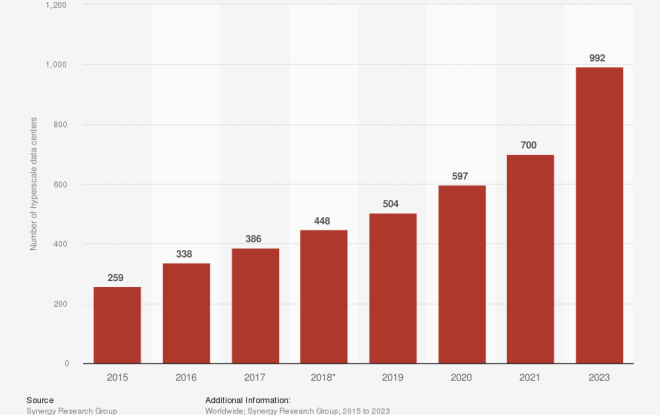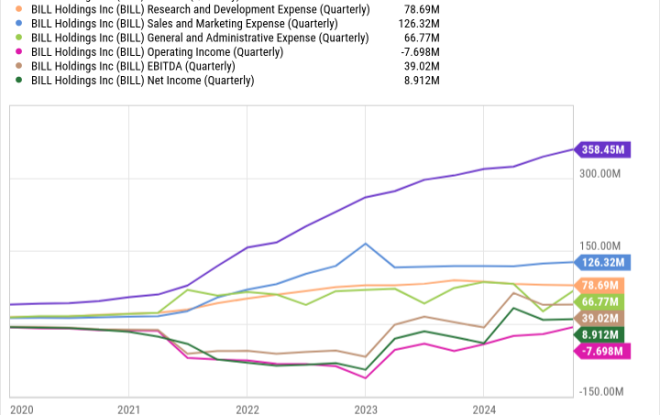Surprise! Billionaire Money Managers Are Selling Shares of Nvidia and Piling Into 2 Off-the-Radar Stock-Split Stocks.
Although artificial intelligence (AI) has been an exceptionally popular market trend that has helped power the growth-fueled Nasdaq Composite and benchmark S&P 500 to new heights, the enthusiasm shown by investors for stocks conducting splits has played an equally vital role in lifting select equities higher in 2024.
A stock split allows a publicly traded company to adjust its share price and outstanding share count by the same factor. Splits are purely a cosmetic tool in the sense that they have no impact on a company’s underlying operations or its market cap. Rather, they’re designed to increase or decrease a company’s share price, often with a very clear purpose.
A reverse split aims to increase a company’s share price, usually with the goal of maintaining its listing on a major stock exchange. Since this type of split is often conducted by struggling businesses, it’s one that investors tend to shy away from.
On the other hand, forward stock splits reduce a company’s share price to make it more nominally affordable to retail investors and/or employees who can’t purchase fractional shares. This type of split is typically completed by top-notch businesses that are out-innovating and out-executing their peers. Unsurprisingly, this is where a majority of investors focus their attention.
Since 2024 began, a little over a dozen prominent businesses have announced or completed a stock split; only one was a reverse split.
Billionaire investors have certainly taken note of the outperformance of the Class of 2024 stock-split stocks. However, their outlook for this group is mixed.
While most investors have been fixated on brand-name stock-split stocks, such as Nvidia (NASDAQ: NVDA), billionaire money managers have been quietly sending shares of Nvidia to the chopping block in favor of two off-the-radar stock-split stocks.
Wall Street’s smartest and richest asset managers are passing on Nvidia
Though it was Walmart that officially kicked off stock-split euphoria early in 2024, there hasn’t been a more-anticipated split this year than Nvidia’s. The AI juggernaut completed its historic 10-for-1 forward split following the close of trading on June 7.
Even though Nvidia’s AI graphics processing units (GPUs) are dominating in AI-accelerated data centers, this hasn’t halted a nine-month exodus by billionaire asset managers from the company’s stock. Based on form 13F filings with the Securities and Exchange Commission for the June-ended quarter, seven billionaires were sellers, including (total shares sold in parenthesis):
-
Ken Griffin of Citadel (9,282,018 shares)
-
David Tepper of Appaloosa Management (3,730,000)
-
Stanley Druckenmiller of Duquesne Family Office (1,545,370)
-
Cliff Asness of AQR Capital Management (1,360,215)
-
Israel Englander of Millennium Management (676,242)
-
Steven Cohen of Point72 Asset Management (409,042)
-
Philippe Laffont of Coatue Management (96,963)
Although ringing the register following a greater than 700% gain since the start of 2023 likely explains some of this continued selling activity, history might be the primary culprit that has billionaires eager to reduce their stake in Nvidia.
Since the broad-based proliferation of the internet three decades ago, we haven’t witnessed a single highly touted innovation, technology, or trend escape a bubble early in its existence. This is to say that investors have consistently overshot how quickly a new innovation would have utility or become mainstream. Considering that most businesses lack a well-defined plan to generate a positive return on their AI investments, we’re likely witnessing the early stages of an AI bubble.
Billionaires might also be following the cue of CEO Jensen Huang and other Nvidia insiders. Huang has been a persistent seller of his company’s stock since the midpoint of June. To boot, no company insiders have made an open-market purchase of their company’s stock since December 2020. If insiders don’t view their stock as a good value, why would billionaire money managers think it’s a deal?
The final catalyst behind this selling looks to be increasing competition. Besides external competitors bringing their AI GPUs to market, Nvidia’s top customers by net sales are also internally developing chips for use in their high-performance-computing data centers.
Instead of focusing on Wall Street’s most-popular stock-split stock of 2024, billionaire money managers chose to pile into two of the most under-the-radar companies enacting splits.
Sony Group
The first stock-split stock that has garnered only a fraction of the attention that Nvidia has — but had investors champing at the bit to purchase shares in the second quarter — is consumer electronics provider Sony Group (NYSE: SONY). Sony’s American depositary receipts (ADRs), which are set to split 5-for-1 on Oct. 8, had six billionaire buyers in the June-ended quarter (total shares purchased in parenthesis):
-
Ken Fisher of Fisher Investments (847,814 shares)
-
Ken Griffin of Citadel (251,987)
-
Israel Englander of Millennium Management (71,777)
-
John Overdeck and Davd Siegel of Two Sigma (19,400)
-
Cliff Asness of AQR Capital Management (4,573)
Although it has been nearly four years since Sony introduced its PlayStation 5 gaming console, the company is finding new and innovative ways to spur growth in its consumer-facing gaming segment. On top of increasing the price of its console in Japan to boost sales, it’s been enjoying a notable uptick in PlayStation Plus revenue. This subscription service allows users to game with their friends, access exclusive games, and store their data in the cloud.
We’re also inching closer to the expected release of Sony’s next-generation gaming console. While this release is still probably two years away, it’s not uncommon for investors to anticipate the sales and profit boost that console makers enjoy when releasing new systems.
Beyond gaming, Sony Group’s Imaging and Sensing Solutions (I&SS) segment is enjoying meaningful growth, with sales up 21% year over year. It is a key supplier of image sensors used in next-generation smartphones and digital cameras. In particular, the ongoing rollout of 5G networks by wireless companies, and the desire of businesses and consumers to take advantage of these faster download speeds, has led to a device replacement cycle that’s lifted demand for Sony’s products.
The final piece of the puzzle is that Sony’s board has authorized the repurchase of up to 30 million shares, representing close to 2.5% of its outstanding share count. For companies with steady or growing net income, buybacks have a way of boosting earnings per share and making a company more fundamentally attractive to investors.
Cintas
The other under-the-radar stock-split stock that billionaire money managers have decisively chosen over Nvidia is Cintas (NASDAQ: CTAS). The provider of corporate uniforms and business services completed its largest-ever forward split (4-for-1) last week and had four billionaire buyers during the second quarter:
-
Israel Englander of Millennium Management (1,117,976 shares)
-
Jeff Yass of Susquehanna International Group (164,424)
-
John Overdeck and David Siegel of Two Sigma (155,932)
Aside from the excitement surrounding the company’s first stock split in 24 years, the primary lure for Cintas is that it’s cyclical. In other words, it ebbs and flows with the health of the U.S. economy.
Though recessions are an inevitable part of the economic cycle, they are known for resolving quickly. Only three of 12 U.S. recessions since the end of World War II surpassed the 12-month mark, and none endured longer than 18 months. By comparison, most periods of growth have easily topped 18 months. Aligning Cintas’ success with the U.S. economy has allowed it to grow steadily over the long run.
Cintas also has more than 1 million corporate clients. Providing everything from uniforms to floor mats, soap dispensers, and safety kits ensures that no single business is crucial to its success or capable of rocking the boat.
However, the one glaring concern with Cintas is the company’s valuation. While there’s no denying that bolt-on acquisitions and ongoing product innovation have helped Cintas sustain high-single-digit growth, its forward price-to-earnings ratio of 45 implies that it’s priced for perfection — something for current and prospective investors to keep in mind.
Should you invest $1,000 in Sony Group right now?
Before you buy stock in Sony Group, consider this:
The Motley Fool Stock Advisor analyst team just identified what they believe are the 10 best stocks for investors to buy now… and Sony Group wasn’t one of them. The 10 stocks that made the cut could produce monster returns in the coming years.
Consider when Nvidia made this list on April 15, 2005… if you invested $1,000 at the time of our recommendation, you’d have $694,743!*
Stock Advisor provides investors with an easy-to-follow blueprint for success, including guidance on building a portfolio, regular updates from analysts, and two new stock picks each month. The Stock Advisor service has more than quadrupled the return of S&P 500 since 2002*.
*Stock Advisor returns as of September 16, 2024
Sean Williams has no position in any of the stocks mentioned. The Motley Fool has positions in and recommends Nvidia and Walmart. The Motley Fool recommends Cintas. The Motley Fool has a disclosure policy.
Surprise! Billionaire Money Managers Are Selling Shares of Nvidia and Piling Into 2 Off-the-Radar Stock-Split Stocks. was originally published by The Motley Fool





Leave a Reply